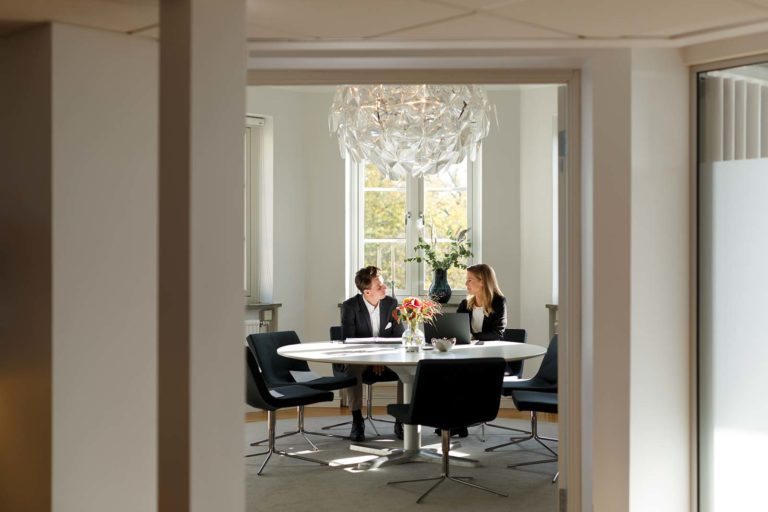
With the gradual loosening of quarantine restrictions, both employers and employees are already discussing that perhaps it’s time to return to offices. The Government is recommending not to rush unless it is necessary. Employment law specialists take a similar view emphasizing that before bringing employees back to offices, the employers should think through if they will be able to adapt the working environment to the latest safety requirements.
According to Magnusson partner Rūta Didikė, this unprecedented situation has brought numerous questions for employers as the latter can no longer rely on their previous experience. The attorney-at-law advises that the first thing which company managers should do is to assess their abilities to ensure safety in the working environment, and ask themselves if it is really necessary for all employees to come back to their physical work places.
“We are not talking about production or logistics companies where not everybody could work from home during the quarantine. We are talking about office workers. They have now been telecommuting and if they have worked efficiently, there is no necessity for them to rush to the offices. Returning could be considered if employees’ well-being is depending on that or their conditions of work from home are too complicated, whether it is related to childcare or certain technical aspects,” says Ms Didikė.
No single formula for smooth comeback
Return of employees to offices should be gradual, and the question who would return first and whether all the staff could work at the office simultaneously is a matter of working environment and work organisation of each company. There is no uniform rule which works for all companies. According to the attorney-at-law, the company manager should identify his needs as the employer, find out how his/her employees could and would want to work, and then organise work to accommodate the interests of both sides.
“The manager should think through if, following all the latest safety recommendations, he/she will be able to bring all the employees back to the office at the same time. Most probably it would hardly be feasible as it is required to ensure bigger distances between workstations. Work organisation principles should then be set out very clearly: how many people and what specialists or departments are necessary at the same time. For instance, the marketing and sales can work one day, whereas the HR and accounting can work next day; some employees can work Mondays while others Fridays, some could come to work in the morning, others at lunch, and so on,” Ms Didikė explains.
It is recommended to give careful consideration to bringing back the people who are at higher risk, also those who wish to continue working from home due to family circumstances. According to the attorney-at-law, there are always those who want to work from home and those who are eager to return to the offices. “There’s a saying “to be in touch” which means that a person knows what’s happening in the organisation, actively communicates with colleagues. During the quarantine, it was done to a lesser degree, and though regular video meetings were held, many employees still feel the need to talk face to face with their co-workers,” says the employment law specialist.
A survey conducted by Baltijos tyrimai during the quarantine has shown that two thirds of employees of 30-49 years old wanted to get back to work in the office already the first month of the quarantine, and a similar number of 50-year-olds maintained that they would want to continue working from home.
Non-compliant employers are risking fines
The key task for employers is to take the maximum steps preventing the risk of the virus spread when employees come back to the offices. First, they should decide on the use of the necessary physical protection measures suitable for each specific situation: glass partitions, medical masks, gloves. It is also important to ensure ventilation and disinfection of the premises, and clearly describe how it should be done. If third parties visit the company, a separate room should be allocated for their reception.
Based on the recommendations, a distance of 2 metres should be kept between people, but it is not always possible to do so in the offices. “Having weighed all the factors “for” and “against”, employers can make a decision that’s best for them, yet one has to conclude that remote working may remain the optimal solution for many, at least for now,” says Ms Didikė.
Consciousness of each employee plays the crucial role in ensuring safety. An employee who has started feeling unwell should not go to work, and should inform about it his/her employer and co-workers. In order to avoid any disputes and misunderstandings, Ms Didikė recommends employers setting out clear rules and procedures for employee behaviour, and make them known to their employees.
“Responsibility is mutual: the employer is responsible for workplace safety and must ensure safe and healthy working conditions to their employees, whereas the employee is responsible for following the procedures, and calling in sick when he/she is feeling unwell,” the attorney-at-law point out.
According to Ms Didikė, if the employer does not comply with the requirements of the sanitary standards and legal acts governing prevention of communicable diseases, as a result of which the virus spreads in the company, the manager can face a fine from 1.5 to 6 thousand euros. Persons breaching self-isolation requirements bear criminal liability.
Both businesses and authorities should do their homework
Employers should view the quarantine as an opportunity to optimise their work processes and functions, adopt the necessary internal legal acts, set up procedures for remote working, and reallocate their human resources.
“I think we will be going on fewer business trips in the future as we have clearly seen that meetings can be virtual, thus saving us time and money. It’s also a good opportunity to review procedures for granting annual leave (as the quarantine has shown that this issue cannot be solved smoothly at the time of crisis), the system of salaries and incentives, also collective agreements with trade unions by including certain conditions in case a quarantine and lockdown need to be declared again in the future,” says Ms Didikė.
The attorney-at-law points out that state institutions should also do their homework and improve the legal framework as the current situation has revealed its gaps. “We have seen that the Labour Code is inflexible in such situations as the quarantine. Its provisions should maintain the balance between benefits of both the employee and employer. It is all very good that we want to protect employees, but we should also take care of the employers as they are key to the company survival, which means not only retention of jobs, but also collection of taxes to the budget,” the law expert shares her insights.
When faced with the crisis, in view of Ms Didikė, the position of the state should be clear, the actions of its institutions and interpretations of legal acts should not be in conflict so that the employers could know which legal rules to follow. “For instance, one institution says that the employer should take employees’ temperature and obtain from them information about their holidays, whereas another institution responds that the employer has no right to collect such data. What should the employer do then? Employers need answers here and now as they have to take decisions, and cannot wait for a month until the institutions agree on their positions (if they manage to do so). That is why, we need to get ready now so that such stumbling-blocks are avoided if a similar situation recurs,” the attorney-at-law maintains.










